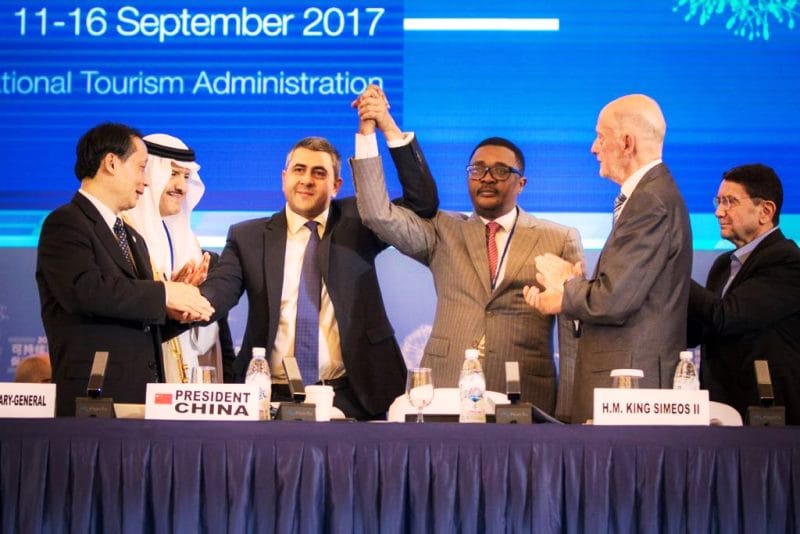If you want to know what your customers think about your brand, the go-to person is Rina Plapler, a partner with MBLM, a Brand Intimacy firm that seeks to create links between people, brands and technology.
Holding two master’s degrees from Harvard and a BA from McGill University, Plapler has global experience that extends from the USA to Qatar and Dubai, and from Peru to St. Lucia. Her clients have included Bank of America, Citibank, Chase, MasterCard, AT&T, and Mexico Tourism. Prior to her association with MBLM she was associated with FutureBrand and Gormley & Partners. Her expertise runs the gamut from tourism and development to financial services and healthcare.
Up Close and Personal
Plapler recently completed a study of brand intimacy in cooperation with Praxis Research Partners that measured the emotional intensity of brand relationships. The measurement was not which brands consumers see as most authentic but rather, the brands with which they feel they have a close personal relationship; the foundation for intimacy is developed by having a strong emotional connection to the product. Based on her knowledge and expertise, Plapler determined that “emotion is the driver of decisions…with rational minds retrofitting the selection – after the fact.”
The Love Connection
Plapler’s research adds a new component to the marketing mix of product, place, promotion and price and requires business executives to add an emotional component to an otherwise objective model. How can Brand Intimacy be introduced into the marketing campaign and then quantified to determine its role in the success or failure of the campaign?
Willing to Take a New Look
Unsatisfied with the status quo, Plapler has taken a look at current marketing activities and assessed them in light of the shifts and changes that are part of global technology and neuroscience and then, using an online community of 6,000 consumers who were introduced to 52,000 brands in 9 industries in the US, Mexico and the UAE she developed an understanding about brand intimacy.
The Brand Intimacy Model (BIM)
The Brand Intimacy Model starts with the User. In order to bond with the brand, the user must have:
1. A sense of fulfillment (expectation of services, quality and efficacy)
2. Identification (aspirational image)
3. Enhancement (becoming better through use of the brand – smarter, more capable and more connected)
4. Ritual (brand is important to daily existence)
5. Nostalgia (memories of the past and warm feelings with associated with the brand)
6. Indulgence (close relationship centered on moments of gratification)
7. Strength of bonding (sharing, bonding and fusing)
8. Brand intimacy quotient
Surprise. No Travel /Tourism Representation
Plapler’s research found that the Top 10 slots for US Brand Intimacy belonged to Apple, BMW, Toyota, Amazon and Harley-Davidson, followed by Disney, Coca Cola, Whole Foods, GMC and Samsung, with no representation from the travel and leisure industry.
Globally, the economic contribution of travel and tourism is $7 trillion (2013) with the global hotel sector producing $400-$500 billion in revenue and the passenger airline industry revenue stream product valued at $563 billion (2014); however, the industry produces the least intimate brand relationships compared to eight other industries.
Why does this happen? Why do consumers not have an emotional connection to industry participants? Plapler found a:
1. Disconnect between purchase and product. As consumers purchase travel through OTA’s or travel agents there is no connection between the product and the consumer and, even when there is a connection, the outcome may not meet the wants/needs of the consumer.
2. Distance between the producer and the consumer. Social media and the value of online recommendations has eliminated the travel vendor from the conversation (or the input is not trusted or valued). When TripAdvisor has a higher trust value than the vendor – there is no room for intimacy with the brand.
3. Less travel and new habits: People are taking 20 percent fewer leisure trips and changes in airline loyalty programs plus complex tiering makes these types of programs less relevant and frequently punitive.
4. Reduced product quality and quantity. Airlines and hotels have created negative associations with an increase in the number of hotel brands resulting in weakened relationships. Less brand clarity combined with mergers, alliance programs and low budget airline carriers do little more than confuse consumers resulting in diminished brand equity.
Let’s Get Intimate
Plapler suggests that the travel and tourism industry can renew a relationship with their consumers by making them happy and engaging with them in a meaningful dialogue and finding ways to reward the consumers who are willing and able to connect with them.
Love the Customer
It appears to me that long ago the airline industry decided it was not part of the hospitality industry but rather part of the transportation industry. Consumers do not usually expect great service from a bus or subway and expect very little from the trucking company delivering produce to the supermarket, so expecting an “intimate relationship” with any airline transportation organization is unlikely to happen.
However, historically, the hotel and tourism industry did care about customer service and yet today – many segments of the industry have decided that the guest/traveler is merely an annoyance (perhaps a commodity) and there are will always be another customer. A reboot of the concept of Total Quality Management (think Horst Schulze) and a willingness to accept and address the changes in the needs and wants of the consumer, may be the path to creating brand intimacy in the industry.
Plaplers’ study of the disconnect between the consumer and the travel and tourism industry is an important peek behind the curtain and c-suite executives in leadership positions would be wise to actually accept this wake-up call and not send it into voice mail or spam.
For additional information, click here. More information on travel findings may be found here.
This copyright article may not be reproduced without written permission from the author.






















